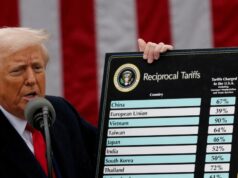
China’s DeepSeek affordable AI model has lent urgency to India’s own plan, announced in March 2024, for Safe & Trusted AI that is balanced, technology enabled and India specific. It called for developing indigenous technical tools, guidelines, frameworks and standards contextualized to India’s unique challenges and opportunities as well as social, cultural, linguistic and economic diversity.
On Thursday, IT Minister Ashwini Vaishnav announced plans for a home grown foundational Large Language Model for India AI. It would involve an investment of over $1 billion that would include 18,000 Graphics Processing Units (GPUs) to do everything, from writing code to poetry, and the development deadline is 10 months.
Reports said India AI will help researchers, students and developers build the backbone of a powerful AI model “capable of understanding and responding to the nuances of Indian languages and contexts.”
“It will take time until we build,” Pranay Kotasthane, head of the High Tech Geopolitics programme at the Takshashila Institution told StratNews Global, “but DeepSeek shows that we will see some Indian models soon that will come up, does that strategically offer an advantage or not is a different thing.”
The way he sees it, foundational AI models will soon get commoditized and DeepSeek being an open source model, anybody with sufficient compute power can run it on their own. Ideally, in his view, the Indian government should think strategically, and see which part of the AI supply chain it can occupy, because there’s no way it can take over the entire chain.
So where is this place in the supply chain? Given that China’s economy seems to be going down, can the Indian government identify exactly what national strength it can leverage to make a position for itself in the supply chain? It throws up another point:
“DeepSeek’s arrival is an opportunity for other companies and countries to see how they can get into this game. Many of the things being tried across the world, you will see some come to the fore in one form or another. Add to that push back from American tech majors.”
Can India make money out of it? For many foundational models, the pathway to earning revenue is not clear. No one is sure how the kind of money being invested in AI will be recovered. In that sense, Indian firms are being more prudent with some preferring to invest in areas such as health care where a return is probably discernible.
The arrival of DeepSeek throws up a philosophical question: how come the Chinese came up with this when India didn’t? After all, India is an acknowledged giant in software and related engineering skills.
“In his book the Politics of Innovation, Georgetown University Prof Mark Taylor has this concept called creative insecurity, where the sum total of external threats are greater than the sum total of internal divisions,” Kotasthane explained. “This is when countries prioritise innovation with bigger R&D budgets. So China has this insecurity, that it has to do something.”
“We are yet to feel that creative insecurity,” he argues, pointing to low spending on R&D but it’s also about smart engineers who have done or are doing cutting edge work. They would have also collaborated with researchers in the US.
China has some obvious advantages, a government with deep pockets that can afford to subsidise AI development. The US being the world’s technology superpower, has an advantage with top corporates queuing up to invest in Stargate, a $500 billion private AI venture.
India’s $1 billion plus AI plan looks small in comparison, but as Kotasthane puts it, the key is to think strategic and work smart.
Thirty eight years in journalism, widely travelled, history buff with a preference for Old Monk Rum. Current interest/focus spans China, Technology and Trade. Recent reads: Steven Colls Directorate S and Alexander Frater's Chasing the Monsoon. Netflix/Prime video junkie. Loves animal videos on Facebook. Reluctant tweeter.




